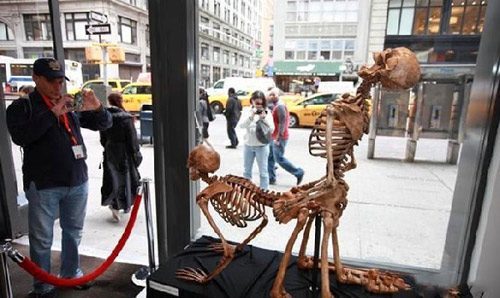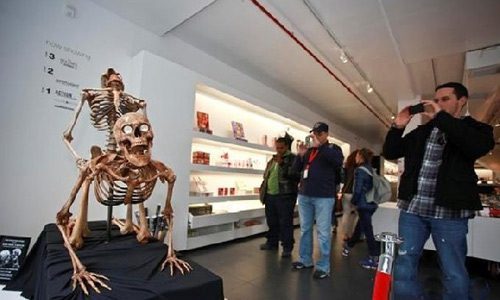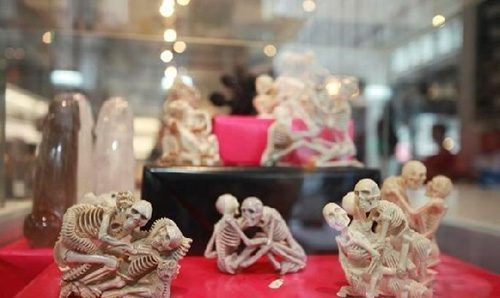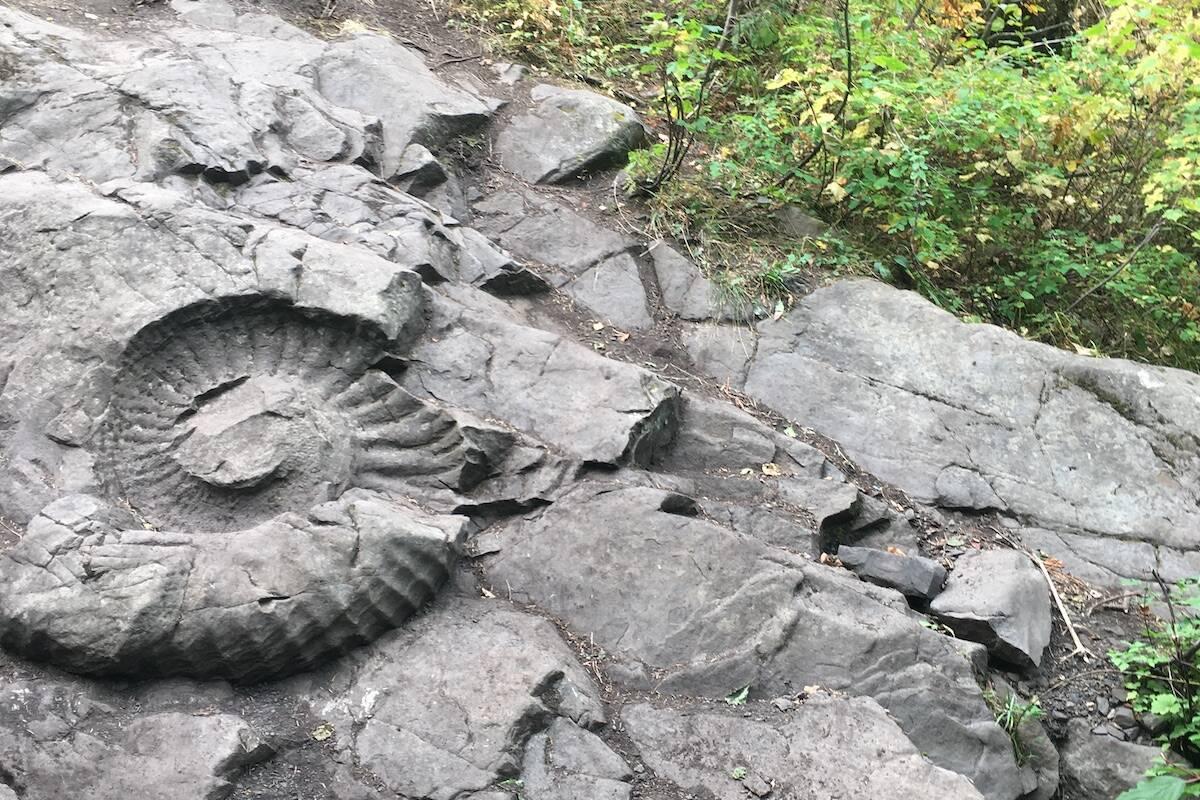Archaeologists have unearthed the frozen remains of two girls and a boy at the top of a cloud-swept volcano in the Andes, where Incan priests sacrificed them to the gods five centuries ago.
The mummies are in such good condition that the organs are intact and, in at least one case, it appears that frozen blood still fills the heart.
The 500-year-old children “appear to be the best preserved Inca mummies ever found” and are in better condition than most, if not all, mummies from any period, according to Johan Reinhard, co-leader of the American-Argentine-Peruvian team that made the discovery, which was announced yesterday. “The arms looked perfect, even down to visible hairs,” he said.
Studies of the preserved body tissues, organs and fluids, using modern DNA techniques and other advances, could greatly increase understanding of a civilization that had no written language, specialists said. Scientists might learn, for example, if the children came from the same family and glean insights into what diseases, parasites and viruses they carried and foods they ate.
 The children were clothed, and the site, found on March 16, harbored an unusually rich collection of undisturbed Incan treasures laid out presumably to appease the mountain gods. The trove included about three dozen gold, silver and shell statues, half of them clothed, as well as bundles of ornate textiles, moccasins and pottery – some still containing food. Found in such unusual plenitude, the artifacts could greatly enhance understanding of the enigmatic Incan empire and particularly its mountain worship, according to independent experts.
The children were clothed, and the site, found on March 16, harbored an unusually rich collection of undisturbed Incan treasures laid out presumably to appease the mountain gods. The trove included about three dozen gold, silver and shell statues, half of them clothed, as well as bundles of ornate textiles, moccasins and pottery – some still containing food. Found in such unusual plenitude, the artifacts could greatly enhance understanding of the enigmatic Incan empire and particularly its mountain worship, according to independent experts.
The discovery team braved three days of driving snow and 70 mph winds at the world’s highest archaeological site – the 22,000-foot peak of Argentina’s Mount Llullaillaco – before they finally discovered the burial platform, which lay under five feet of rock and earth.
“At one point, we had to lower one of our workers into the pit by his ankles so he could pull the mummy out with his hands,” Reinhard said.
Reinhard is a veteran mountain explorer who has discovered 16 other Incan mummies, including the celebrated Peruvian “Ice Maiden” Juanita, who created a stir – and even attracted the attention of President Clinton – when she was brought to Washington in 1996 in a custom-built freezer for display at the Geographic Society’s headquarters.
Juanita – like numerous other mummies, including the 5,300-year-old “Ice Man” discovered in the Italian Alps in 1991 – was “freeze-dried” by nature rather than deliberately mummified by fellow humans. While she was remarkably well-preserved, the three children from Llullaillaco are in much better shape, Reinhard said in a telephone interview from Salta, in northwest Argentina, where the discovery was announced. The children, he said, froze before they became dehydrated, so the organs never shriveled and desiccation never occurred.
“It’s pretty amazing that tissue would stay preserved 500 years, even in a stable environment,” said David Hunt of the Smithsonian Institution, a specialist in skeletal biology and human mummies. He said a glacier might provide the required combination of cold and high humidity.
In fact, Reinhard said, “The doctors have been shaking their heads and saying [the mummies] sure don’t look 500 years old [but] could have died a few weeks ago.” The remains have not yet been tested to determine how long they have been buried, he acknowledged. They are at an Incan site, swaddled and surrounded by textiles and artifacts that are “so Inca, it really is a given.”

Researchers have not yet determined the specific cause of death of the children, who were between age 8 and 14 when they died, Reinhard said. The typical methods of ritual killing were strangulation, live burial and blows to the head, he noted.
Between about 1438 and 1532, the Incas expanded their empire until it occupied a 2,500-mile swath along the Pacific coast of South America, from Colombia to central Chile. Admired for their agriculture, architecture and engineering, the Incas were conquered within three years by the Spanish conquistadors who arrived in 1532.
Craig Morris, dean of science at the American Museum of Natural History in New York, said he has been in touch with Reinhard and, based on his initial descriptions, exclaimed: “I suspect [the discovery] is absolutely spectacular. . . . It’s extremely important.”
Morris noted that textiles were extraordinarily vital clues to the Incan culture, and these should provide “a great record of status, ethnic identity within the empire” and other hints as to where the children came from. One girl is wearing a feathered headdress, which retains its original white color, and a yellow, geometrically designed textile cover laid over her outer mantle.
The other girl had been damaged by lightning striking through the ground. It took off an ear and charred her left shoulder, said Reinhard. But the computer assisted tomography, or CAT, scans made by doctors in the past few days showed the two others to be “virtually perfect,” Reinhard said.
Drawn to icy mountain peaks in part because of their potential for preserving relics, Reinhard had visited the site in the 1980s and always planned to return, he said. The team, whose expedition was sponsored by the National Geographic Society, had spent a month exploring a lower peak nearby, getting acclimatized to the oxygen-poor air. They then established a series of tent encampments, ending with one at the summit of Llullaillaco. After a fruitless week there, Reinhard said, “I was about to give up.”
But they kept following the trail of “fill” dirt that indicated human activity. Finally, they spotted the small figure of a llama carved from a rare type of seashell. That was their first clue to the burial site, located on a promontory of rock.


















































 The children were clothed, and the site, found on March 16, harbored an unusually rich collection of undisturbed Incan treasures laid out presumably to appease the mountain gods. The trove included about three dozen gold, silver and shell statues, half of them clothed, as well as bundles of ornate textiles, moccasins and pottery – some still containing food. Found in such unusual plenitude, the artifacts could greatly enhance understanding of the enigmatic Incan empire and particularly its mountain worship, according to independent experts.
The children were clothed, and the site, found on March 16, harbored an unusually rich collection of undisturbed Incan treasures laid out presumably to appease the mountain gods. The trove included about three dozen gold, silver and shell statues, half of them clothed, as well as bundles of ornate textiles, moccasins and pottery – some still containing food. Found in such unusual plenitude, the artifacts could greatly enhance understanding of the enigmatic Incan empire and particularly its mountain worship, according to independent experts.